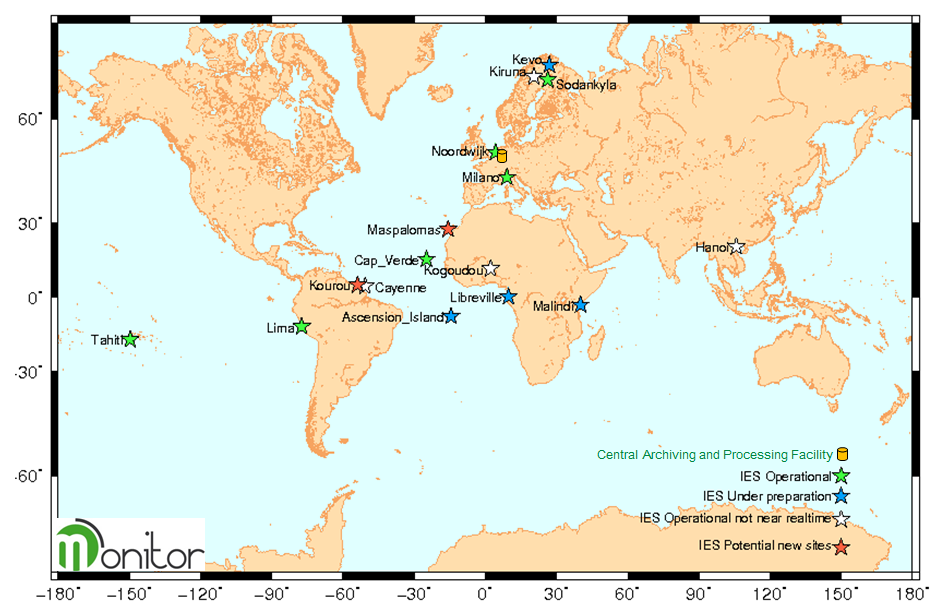
New ESA MONITOR dataset available in GSSC Now
The GSSC team is proud to announce the addition of the ESA MONITOR dataset to the GSSC Now platform. MONITOR is a project of the European Space Agency dedicated to understanding the impact of ionospheric effects on GNSS systems such as EGNOS and Galileo.
The ESA MONITOR network is composed of high-frequency-sampling global navigation satellite systems (GNSS) receivers deployed mainly at low and high latitudes to study ionosphere variability and jointly with global GNSS data and ionospheric processing software in support of the GNSS and its satellite-based augmentation systems (SBAS) like the European EGNOS. Remember the requirement to have MONITOR stations at low latitudes comes from the fact the variability of the ionosphere is larger near the equator.

One of MONITOR’s objectives was the collection of data in a period covering the Solar maximum of solar cycle 24 around mid 2013 (remember, the sun undergoes an 11 year cycle with maximum solar activity around the middle of each cycle). Solar flares or Coronal Mass ejections cause all sorts of disturbances in the ionosphere that can interact with electromagnetic radiation and cause havoc in everything from satellites to communications networks on earth to electricity distribution networks.
The data collected provides a very important contribution to the understanding of how GNSS behaves when undergoing a period of high solar activity. In particular, the MONITOR dataset had an important role in the development of EGNOS, an operational system for safety-critical civil aviation.
Among the products provided we have daily ionospheric scintillation indices, dual-frequency observables and high-frequency raw data from MONITOR stations, Slant TEC from a large set of ground stations (for model verification/assimilation), ultra-rapid European and Global VTEC maps, Global Electron Content index, rapid and ultra-rapid 3D electron density grid data, the sidereal day, TID and solar flare indices, solar flare variability index and higher-order errors from IONEX.
The dataset is available to restricted users of the GSSC. In order to access the data, an interested party must submit an application to the GSSC Helpdesk.
The ESA MONITOR dataset is one of the latest additions to the GSSC Now platform, and ESA is proud to offer this valuable resource to the scientific community. With the release of the ESA MONITOR dataset, researchers worldwide can now access critical information on the Earth’s ionospheric events, advancing our understanding of the Earth, its environment, and its impact on GNSS systems.
More info on the dataset can be found here
Sincerely, The GSSC Team, Navigation Science Office


